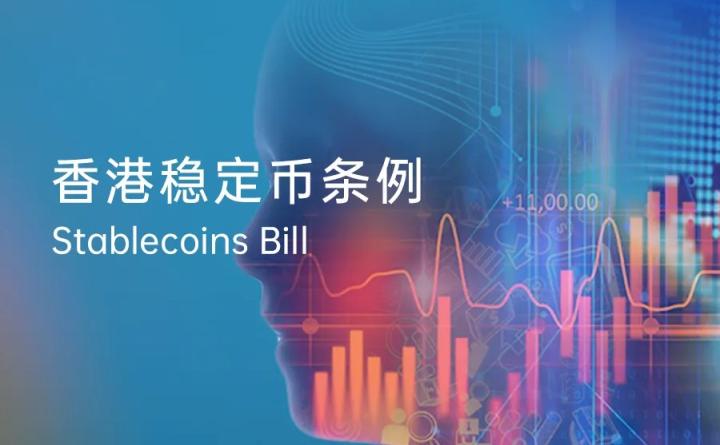Written by: Castle Labs
Translated by: AididiaoJP, Foresight News
Over the past 12 months, stablecoins have gradually moved from the margins of the crypto field to a broader financial market. The data speaks for itself: stablecoin supply has grown by more than double, with a significant increase in usage by traditional payment networks and institutional participants, showing growing market interest in these assets. More profoundly, there has been a structural transformation. Once just a tool for crypto traders to store profits, it has now become the transaction layer for emerging economies, a settlement tool in the financial technology stack, and a strategic monetary extension of U.S. monetary policy.
This report compares stablecoin usage from mid-2024 to mid-2025, tracking adoption rate growth, regional changes, and the current status of stablecoins as a product and concept.
Global Trend: From Liquidity Tool to Functional Infrastructure
Market Cap and Usage Growth

Stablecoin market cap rebounded from about $160 billion in mid-2024 to over $260 billion in July 2025, an increase of more than 60%, surpassing the 2022 peak in total circulating stablecoins and creating new liquidity records.
On-chain transaction volume speaks even more clearly. In 2024, stablecoin settlement volume exceeded the total of Visa and Mastercard, reaching $27.6 trillion. Monthly transaction volume doubled year-on-year, growing from $1.9 trillion in February 2024 to $4.1 trillion in February 2025. Peaking at $5.1 trillion in December 2024, this indicates that these funds are no longer limited to the crypto native domain, with stablecoins accounting for over half of all transaction value in some ecosystems.
User Base Expansion
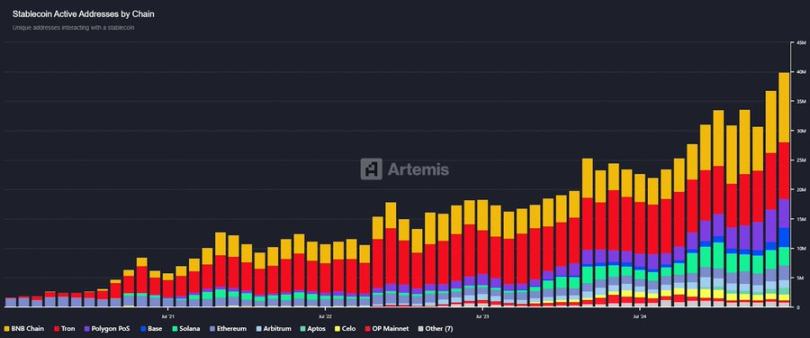
Active wallet numbers grew from about 20 million in mid-2024 to about 40 million in mid-2025. The total number of addresses holding stablecoin balances has exceeded 120 million. This growth is not just quantitative but also reflects diversity. More and more small businesses, freelancers, and remittance users are transferring funds via stablecoins, often without directly participating in the broader crypto market.
Institutional Integration
In 2024, stablecoins became not just a financial tool for crypto companies but were gradually adopted by fintech companies, asset management firms, and some enterprises. The reason is simple: they provide a fast, programmable, dollar-denominated asset that can be transferred across platforms instantly without relying on traditional banking channels. For companies operating across nations or time zones, this means improved liquidity management, faster internal transfers, and reduced settlement delays.
With interest rates remaining high for most of 2024, depositing idle cash into stablecoins like USDC became more attractive. Many stablecoins are backed by short-term government bonds. While users cannot directly earn yields, their reserve structure gives users confidence in high-quality, interest-bearing underlying assets. For companies seeking a reliable dollar digital alternative, stablecoins became a viable option.
This year, stablecoins have been more deeply integrated into fintech architecture. Visa expanded USDC settlement to Ethereum and Solana. Stripe and PayPal introduced stablecoin payments to consumer channels. Banks have even begun testing local stablecoins, such as Standard Chartered's HKD coin, to explore faster cross-border settlements.
Tether achieved $13 billion in profits in 2024, more than double BlackRocks, highlighting the financial significance of its reserve model. This not only proves that stablecoin issuers are supporting infrastructure but also shows they are operating extremely profitable businesses. This profitability translates into sustainability, enhances user trust, and accelerates adoption across the financial sector.
Evolution of Stablecoin Types
Fiat-Backed Stablecoins Dominate
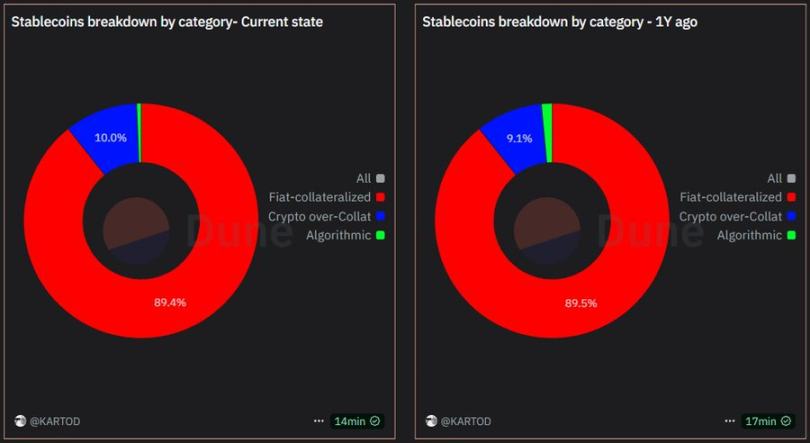
Fiat-backed stablecoins (fully supported by cash or short-term government bonds) increased market share from about 85% in 2024 to over 90% currently. Tether (USDT) supply grew from about $83 billion to about $150 billion. USDC recovered from its 2023 low (about $59 billion) and regained institutional favor.
Stablecoins like PayPal's PYUSD and Paxos' USDP saw moderate adoption, but real growth was concentrated in top products. User preference for fully supported and transparent reserves has become a universal expectation, though this also brings trade-offs in centralized custody and regulatory risks.
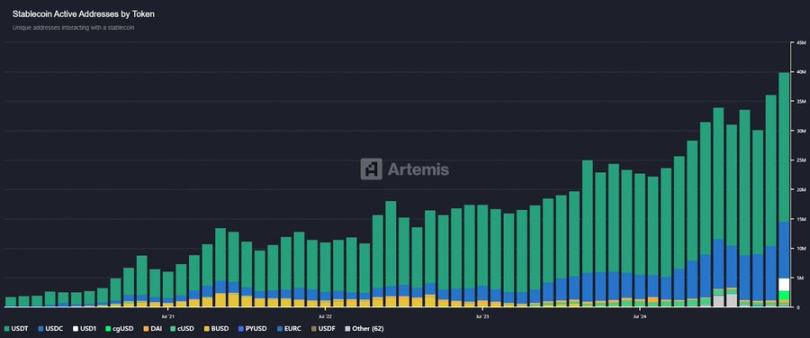
Decline of Crypto-Collateralized and Algorithmic Stablecoins
Crypto-collateralized stablecoins (like DAI) saw slight growth in absolute numbers (about $5 billion) but decreased market share. Protocols like Aave (GHO) and Curve Finance (crvUSD) added hundreds of millions in circulation, but crypto-backed stablecoins failed to make a significant breakthrough and have not collapsed.
On the other hand, algorithmic models have almost disappeared. After Terra's collapse, non-over-collateralized designs lost trust, with many projects like Frax Finance shifting to fully fiat-backed models in 2023. No new algorithmic stablecoin has since gained significant attention.
Today, fiat-backed stablecoins dominate in usage and consensus. Crypto-backed stablecoins represent a small, niche market. The algorithmic approach, once seen as mainstream, has essentially exited the market.
Rise of Yield-Bearing Stablecoins
A noteworthy emerging category in 2025 is yield-bearing stablecoins, assets designed not just for value preservation but also appreciation. Unlike traditional fiat-backed or over-collateralized models, these tokens explicitly integrate real-world or on-chain strategy yields into their structure. Two typical examples are Ethena's USDe and Resolv's USR.
Ethena Labs' USDe uses a delta-neutral strategy, maintaining its peg by pairing ETH collateral with perpetual short positions while generating synthetic yield. This yield is passed to holders through an additional token, sUSDe. This model has attracted early attention for its composability, transparent yield mechanism, and ability to generate income without relying on centralized reserves. As of mid-2025, USDe's supply remains far below major stablecoins, but it is one of the few projects to gain significant adoption and maintain stability post-Terra.
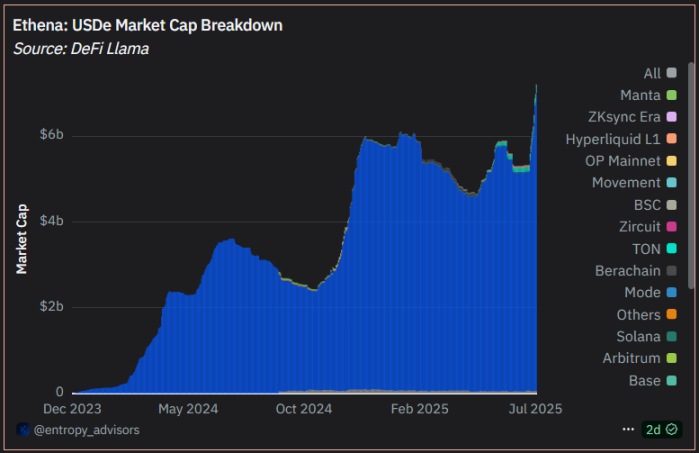
In contrast, Resolv Labs links yield to real-world interest-bearing assets, creating a structure closer to tokenized bonds but existing as a stablecoin. USR aims to maintain its peg while providing users with stable yields through partnerships with off-chain credit and structured products. This is a more institutional approach, with adoption primarily concentrated in DeFi protocols and early lending platforms.

These models are still experimental, with adoption rates far below fiat-backed stablecoins. But they represent a clear trend: users want not just stability but also passive income. The challenge remains maintaining transparency, peg stability, and regulatory clarity. If any of these waver, confidence will quickly dissipate.
Currently, yield-bearing stablecoins have carved out a niche. They have not replaced USDT or USDC but have expanded the design space, offering more capital-efficient choices for users with different risk appetites. Whether they can scale without inheriting the fragilities of previous algorithmic stablecoins remains to be seen. But for now, they are more respected than any attempt since the UST collapse.
Regional Behavioral Shift
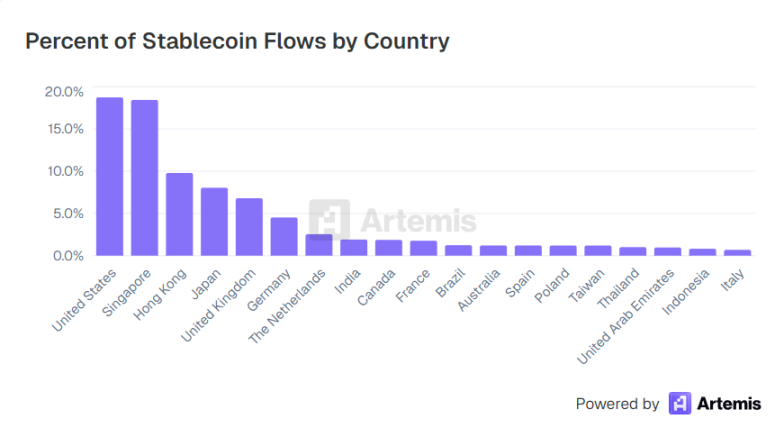
Emerging Markets: Latin America and Africa
Motivation: Stability and Access to Dollar Exposure
In countries facing inflation and currency volatility, stablecoins are increasingly becoming alternatives to digital dollars. Argentina, Venezuela, and Nigeria are prime examples. In 2024, demand for USDT surged during local currency devaluation. By 2025, holding digital dollars has become a normal behavior for individuals and merchants.
In Africa, foreign exchange shortages affect over 70% of countries, and stablecoins now serve as a bridge connecting local economies to global capital. Nigerian exchanges typically quote prices in USDT. When banks cannot provide dollars, businesses pay overseas suppliers using stablecoins.
Remittances and Payments
The migration of remittance routes to stablecoins is significant. In 2024, crypto-based cross-border transfers in Latin America grew by over 40%. By 2025, applications like Binance P2P and Airtm have become primary remittance tools for entire communities.
In sub-Saharan Africa, sending $200 via stablecoins costs approximately 60% less than traditional remittance channels. This is not a marginal improvement but a transformative impact demonstrating product-market fit.
Preferred Platforms and Tokens
TRON has become the dominant blockchain for stablecoin activity in emerging markets due to its low fees, with most niche and P2P markets using USDT on TRON. BSC and Solana have also gained market share, but in many regions, TRON remains the default choice.
USDC is gradually penetrating traditional financial payment channels, especially when regulatory scrutiny or institutional relationships are a focus. However, for ordinary users, USDT still maintains an absolute advantage.
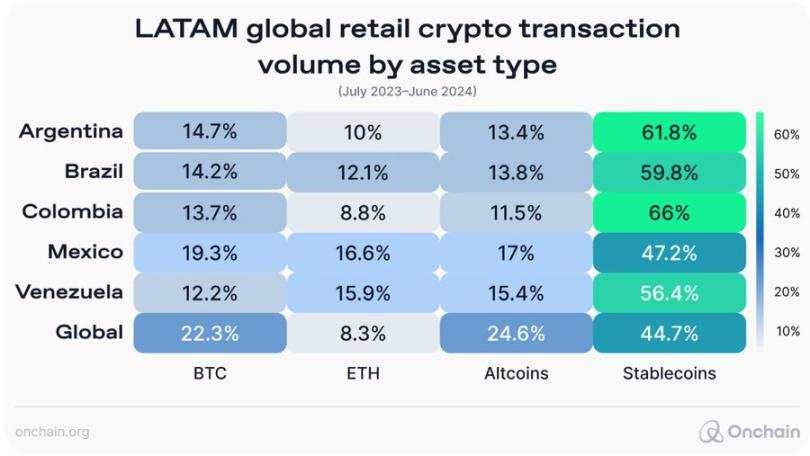
Regulatory Attitude
Governments remain cautious. Brazil has introduced digital asset regulations and is exploring central bank digital currency (CBDC). South Africa is developing guidelines for stablecoins. Most other emerging markets are still observing. While acknowledging their utility, they are concerned about dollarization and capital flight. Currently, basic usage is tolerated, especially when no alternatives exist.
Asia: Significant Regional Differences
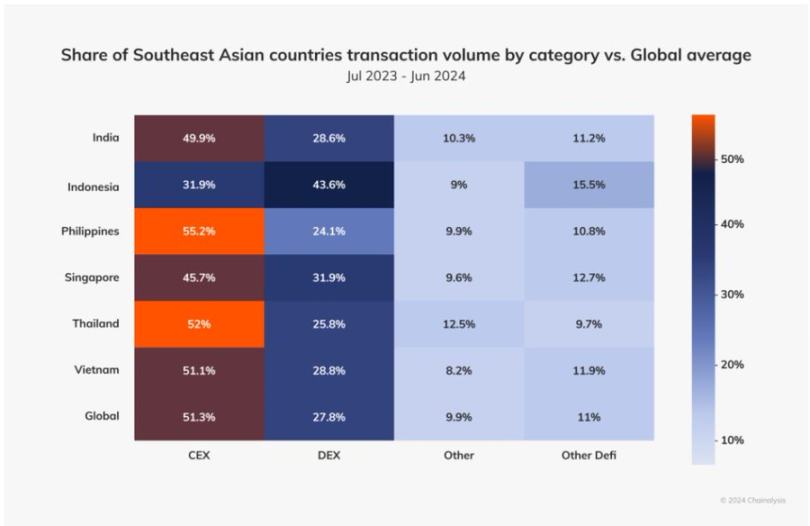
Southeast and South Asia
In Southeast Asia, stablecoin usage is more related to access channels than inflation. In countries like the Philippines and Vietnam, remittances are the primary driver. Overseas workers send USDT or USDC back home through apps like Coins.ph or BloomX. In India, traders and freelancers use stablecoins to transfer funds between platforms with reduced slippage.
Vietnam stands out in retail crypto adoption. Singapore takes a more institutional approach, granting stablecoin licenses and encouraging standardized issuance.
East Asia and Financial Centers
Hong Kong and Singapore position themselves as regulated stablecoin financial centers. The Monetary Authority of Singapore (MAS) implemented clear guidelines by the end of 2024 (reserve support, redemption terms). By 2025, USDC and regional stablecoin issuers are applying for Singapore licenses.
Japan allows banks to issue stablecoins under the legal framework established in 2023. Several yen-pegged stablecoins currently exist but remain niche. In South Korea, stablecoin usage remains concentrated in trading due to strict regulations.
Mainland China officially prohibits cryptocurrency-related activities, but USDT is widely used through over-the-counter channels. Reports indicate substantial funds are used for capital flight and trade activities through Tether on TRON. This remains a persistent but unofficial norm.
Developed Markets: Integration, Not Replacement
Usage Patterns
In the US and Europe, stablecoins are rarely used for daily consumption but are embedded in fintech stacks, corporate finance, and cross-border settlement backends.
Companies use stablecoins to transfer funds between subsidiaries. Freelancers accept USDC as international work compensation. After the 2023 bank failures, crypto companies now rely on stablecoins instead of ACH or SWIFT for fiat transactions.
Franklin Templeton's on-chain money market fund settles in USDC. Mastercard and Western Union have launched stablecoin-based services. These integrations demonstrate the complementary expansion of stablecoins in fintech, rather than complete replacement.
Regulatory Trends
The EU's MiCA framework took effect in mid-2024. By mid-2025, non-euro stablecoins face daily caps, and issuers must apply for licenses. The UK has also passed legislation recognizing stablecoins as digital settlement assets.
The US GENIUS Act has just passed, but its impact is not yet apparent. Previous enforcement actions (like BUSD's decline) and market behavior (focused on USDC/USDT) indicate regulators are indirectly shaping this field. Stablecoins now represent over 1% of M2 money supply, a fact Federal Reserve officials have begun publicly acknowledging.
Conclusion: From Parallel Assets to Embedded Layers
Between July 2024 and July 2025, stablecoins transformed from primarily crypto-native tools to independent parallel financial systems. In emerging markets, they became solutions to circumvent currency collapse and expensive banking services; in developed markets, they were integrated into regulated, compliant workflows.
Market structure reflects this evolution. Fiat-backed stablecoins dominate, representing over 90% market share. Algorithmic and unsupported models, once considered "decentralization" core, have largely disappeared. Stablecoin usage is now driven more by utility and trust than ideology.
The regulatory environment has not fully caught up but is progressing. Institutions, banks, fintech companies, and payment giants are gradually adopting them. The current question is not whether stablecoins will be regulated, but how existing organizations will regulate and integrate them, and how much value they will hold and where it will flow.
Stablecoins are unlikely to completely replace fiat currencies, but in areas where traditional currencies fail (such as non-working hours, cross-border scenarios, or economies with weak infrastructure), they are already filling the gaps.
Future development will depend on continued utility, clear rules, and the ability to expand returns without compromising stability or transparency. However, looking back over the past year, the trend is clear. Stablecoins have found their role, and that role is more significant than most expected.




